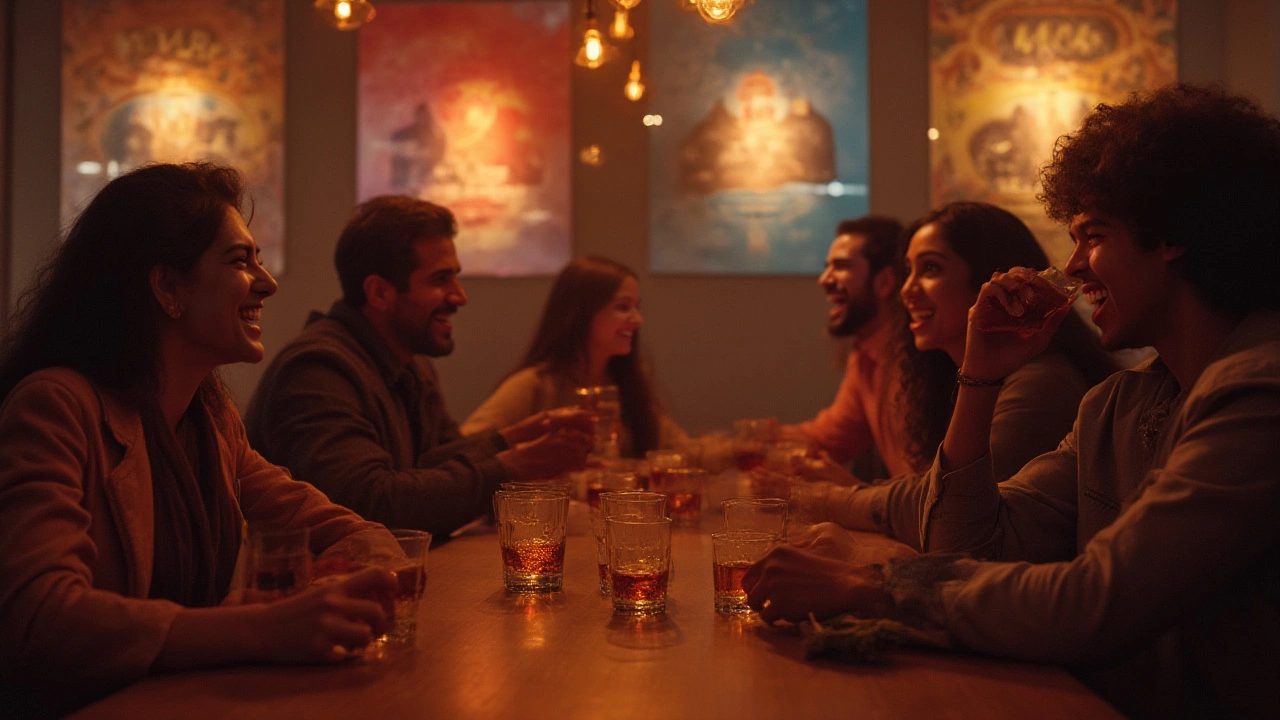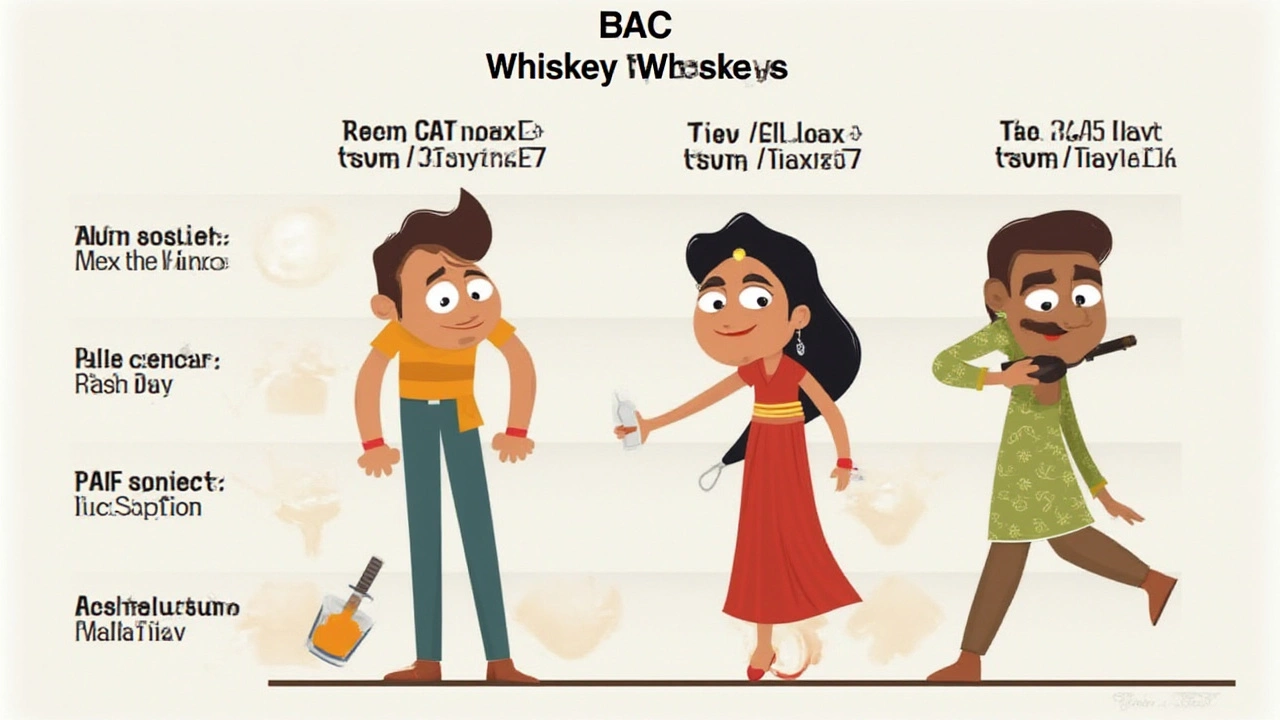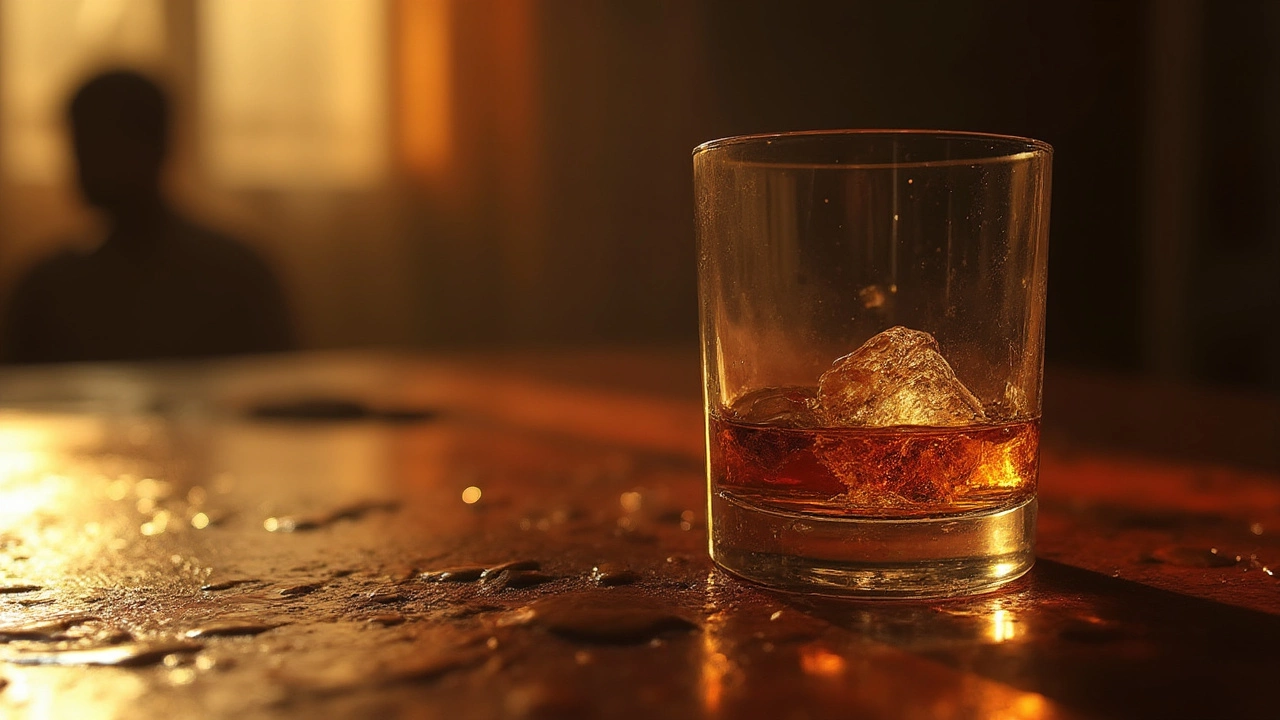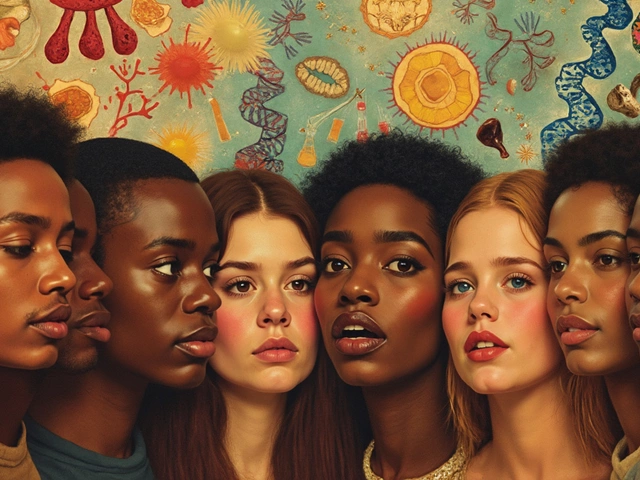
If you’ve ever wondered, “How much whiskey does it take to get drunk?” you’re hardly alone. This is the sort of question that comes up after a clinking round of glasses, playful arguments among friends, or a sober-eyed Google search the morning after. Whiskey has a reputation: strong, smoky, smooth — but what does that actually mean when it comes to your own limits? Nobody wants to take an accidental trip past Tipsy Town and straight into Messyville. Turns out there isn’t a universal answer, but with real numbers, real science, and a good bit of common sense, you can get a clear picture of how whiskey works on your body and what counts as 'drunk' in the first place.
What Happens in Your Body When You Drink Whiskey?
Let’s talk basics. Whiskey, like any alcoholic drink, is measured by its alcohol by volume (ABV). Most whiskeys—Scotch, bourbon, Irish, Japanese, whatever—are bottled at 40% ABV, which means forty percent of the liquid is pure alcohol. One standard serving of whiskey is usually defined as 1.5 ounces (about 44 ml) in the United States. That shot contains the same amount of alcohol as a 12-ounce can of most regular beers or a 5-ounce pour of regular wine. No matter how you take your whiskey—neat, on the rocks, or as a splash in your coffee (not that I'm recommending it to parents juggling school runs)—the alcohol in it acts on your central nervous system in the same way.
When you drink whiskey, alcohol moves fast from your stomach into your bloodstream. Your liver works hard to process and break down that alcohol, but it can only manage about one standard drink per hour. Any drinks you add on top? They just keep floating around your system, making you feel more 'buzzed' or 'drunk', until your liver can catch up.
The tricky part: everyone metabolizes alcohol a little differently. Your body weight, sex, genetics, whether you’ve had food, your hydration level, the speed you’re drinking, and even how tired you are all play a part. For example, if you weigh less, you’ll likely feel the effects of whiskey faster. Women generally have less water content in their bodies than men, so the same amount of whiskey can hit harder. Keira, my daughter, once asked how I could tell if I’d had too much at a holiday dinner. Not because she’d seen me ‘worse for wear’ (I keep it together—mom power) but because she noticed adults suddenly growing louder and funnier. I explained that bodies are like buckets: some are big, some are small, but once they’re full, they spill over. Whiskey fills the bucket a bit faster than wine or beer, simply because it’s stronger.
So what does 'drunk' actually mean on a chemical level? Scientists define it using “Blood Alcohol Concentration,” or BAC. It’s usually measured as a percentage, and in the US, the legal limit for driving is 0.08%. With most average-size people, two fast whiskeys in under an hour can bring your BAC to about 0.05%, enough to make you feel buzzed and loosened up. Three or four in short order, especially on an empty stomach, and you’re already approaching or passing the legal driving limit. If you tipple your way to five or six standard whiskeys in an evening, you’re not just drunk—you’re seriously risky and on the path to a splitting headache or worse.
Different symptoms clue you into your state. After one or two whiskeys, you might feel relaxed, warmer, happier, and a bit chatty. Push it to three or four quickly, and your judgment, coordination, and reaction time start to slip. Keep drinking, and the world gets swimmy. Past five or six? Slurred speech, stumbling, nausea, blackout territory. Nobody wants to meet that version of themselves at a family party (trust me).

How Many Whiskeys Does It Take to Get Drunk? Facts, Myths, and Real Examples
If you search online, the answers are all over the place: 'One shot will do it!' 'It takes a whole bottle!' The truth is buried somewhere in between. For most people, the journey to 'drunk' with whiskey is not one-size-fits-all. But hard data helps. A standard whiskey pour, as mentioned earlier, is about 44 ml at 40% ABV. That’s 0.6 ounces of pure alcohol per shot. Here’s the thing: most healthy adult men (about 160-180 pounds, or 72-82 kg) will usually start feeling pleasantly buzzed after two shots in quick succession—about 20-40 minutes apart.
By the third shot, that same person is probably at or above the 0.08% BAC legal limit for driving in many regions. For a lighter person—let’s say around 120-130 pounds—one or two shots can start to feel like a big deal, especially without any food in the stomach. Women, due to different body composition (not to mention hormonal differences), will often notice effects a little faster than men even at the same body weight. Some of my friends swear their third whiskey is the magic 'good mood/bad decisions' threshold—and science more or less backs this up.
A 2018 study from the US National Institute on Alcohol Abuse and Alcoholism showed men weighing around 154 pounds (70 kg) had an average BAC of 0.08% after consuming four drinks in two hours. For women of around 132 pounds (60 kg), that same BAC could arrive after just three drinks. Earlier or later effects depend on metabolism, age (metabolism slows as you get older), medical conditions, and even whether you’re stressed out (stress can lower your alcohol tolerance). All this puts fresh meaning on 'know your limits.'
But rapid drinking speeds things up. Slam four shots within half an hour? You’ll be wobbling super quickly. Space them out over several hours with food, and you might feel mellow but not dangerously so. (Here’s where bartenders and whiskey fans recommend 'nosing' your drink—sip and savor, don’t chug—you’ll likely have a much better night and a much brighter morning.)
Let’s not forget the ‘myth’ part: 'I have a high tolerance because I’m Irish/Scottish/Russian/American/cat parent.' While genetics can tweak alcohol-processing enzymes, nobody is immune to alcohol’s effects. Even if you don’t feel drunk as quickly, alcohol is still quietly impacting your liver and brain. Faux tolerance doesn’t protect you from a hangover or worse, and it can lead to overconfidence. Fun fact: whiskey drinkers often under-report how much they’ve had, especially in groups, because a glass can hold anywhere from one to three shots, depending who’s pouring.
The pattern is clear: on average, two drinks will start the 'buzz,' three to four is enough for most people to legally classify as drunk, and five or more in a short session is where danger (and memory loss) lurks. But let’s put this into real words: if you’re feeling bolder, a bit off-balance, or playing ping-pong with your emotions, your body’s already sending you warnings. The funny thing is, we rarely see it in ourselves until the next day. (Keira once told a family friend, after a bourbon-fueled Christmas, 'Mum doesn’t karaoke, that’s her whiskey twin.' I wish I could disagree.)

Tips for Enjoying Whiskey While Staying Safe
Sipping whiskey is about pleasure—the aromas, the taste, the subtleties—not just getting smashed. If you want to judge your whiskey by anything, make it the flavor, not the aftermath. Here are some practical ways to enjoy whiskey, avoid the worst hangovers, and even impress your friends with your smart decisions.
- Know your pour: A standard shot glass is more than enough for a serving. Making home pours? Use a measuring jigger. Over-pouring is one of the biggest reasons people get drunker than they planned.
- Eat before or while drinking: Food in your stomach slows down the absorption of alcohol. Carbs and fat-heavy foods work best. Eating first is like putting on armor.
- Pace yourself: Have a glass of water between each whiskey. Not only does it slow you down, but it hydrates you, which helps ward off hangovers.
- Watch your mixers: If you use soda or juice as a mixer, the sugar can speed up the absorption and make you tipsier (and crash harder later).
- See how you feel after each drink: Wait at least 30 minutes before reaching for the next. Sometimes, your body needs a little time for the effects to show up.
- Don’t start with whiskey if you’re already buzzed: Whiskey’s higher alcohol content means it can push you over the edge a lot faster than beer or wine.
- Look out for your friends: If you notice someone getting sloppy or sick, step in. We’re all in this together. A nudge to switch to water can save a night (or a reputation).
- Plan your transport: If you’re drinking whiskey, put your keys away. Get a cab, a ride-share, or set up a sleepover. Your future self (and other drivers) will thank you.
If you’ve got a big whiskey tasting, a festival, or just a cozy home night in mind, remember: your body’s not a math formula, and even seasoned whiskey fans can trip up. Whiskey deserves respect, both for its flavor and its strength. Try journaling your tastings (how much, how you felt, what you enjoyed), especially if you’re trying to build a good relationship with the stuff. And if you’re anything like me, you’ll discover that one or two whiskeys is usually just right—a sweet spot where you taste everything, remember everything, and avoid waking up wondering how you became an amateur lounge singer overnight.
Strangely enough, most whiskey drinkers (the smart ones, anyway) agree: less is more. A shot or two, through good company, good food, and good conversation, can be the difference between a night to remember and a story you desperately hope nobody tells the next day. So pour mindfully, taste everything, and know when to put the glass down—your head, your liver, and maybe your dignity will appreciate it. Cheers to knowing your limits and actually enjoying every drop.





Categories